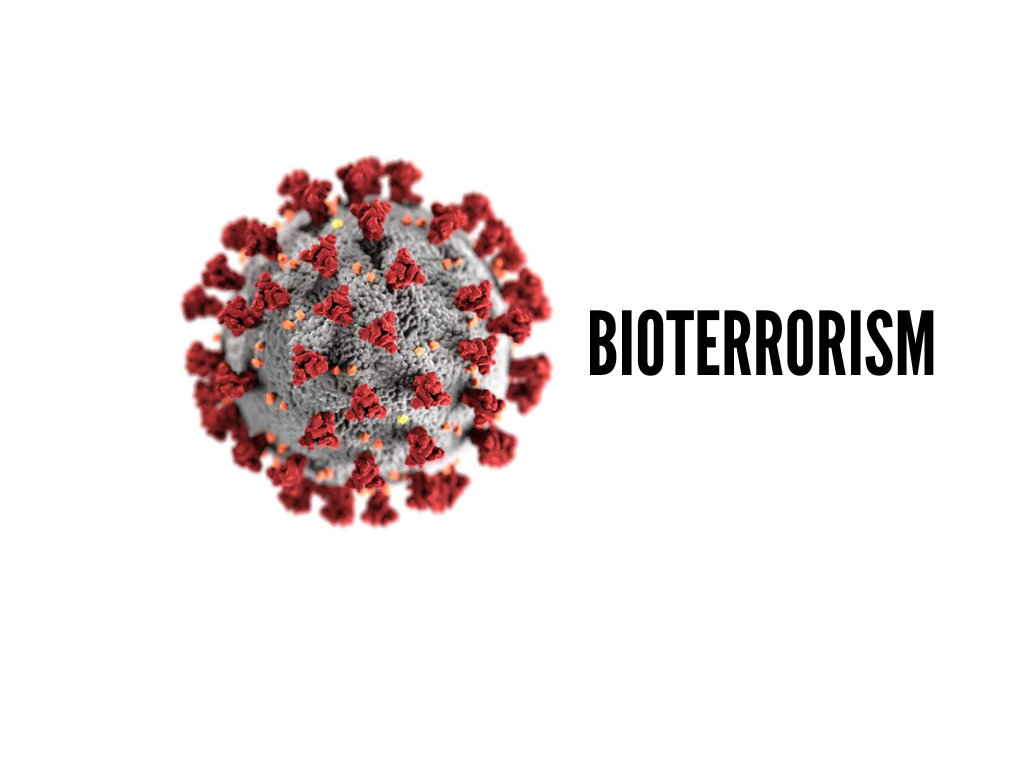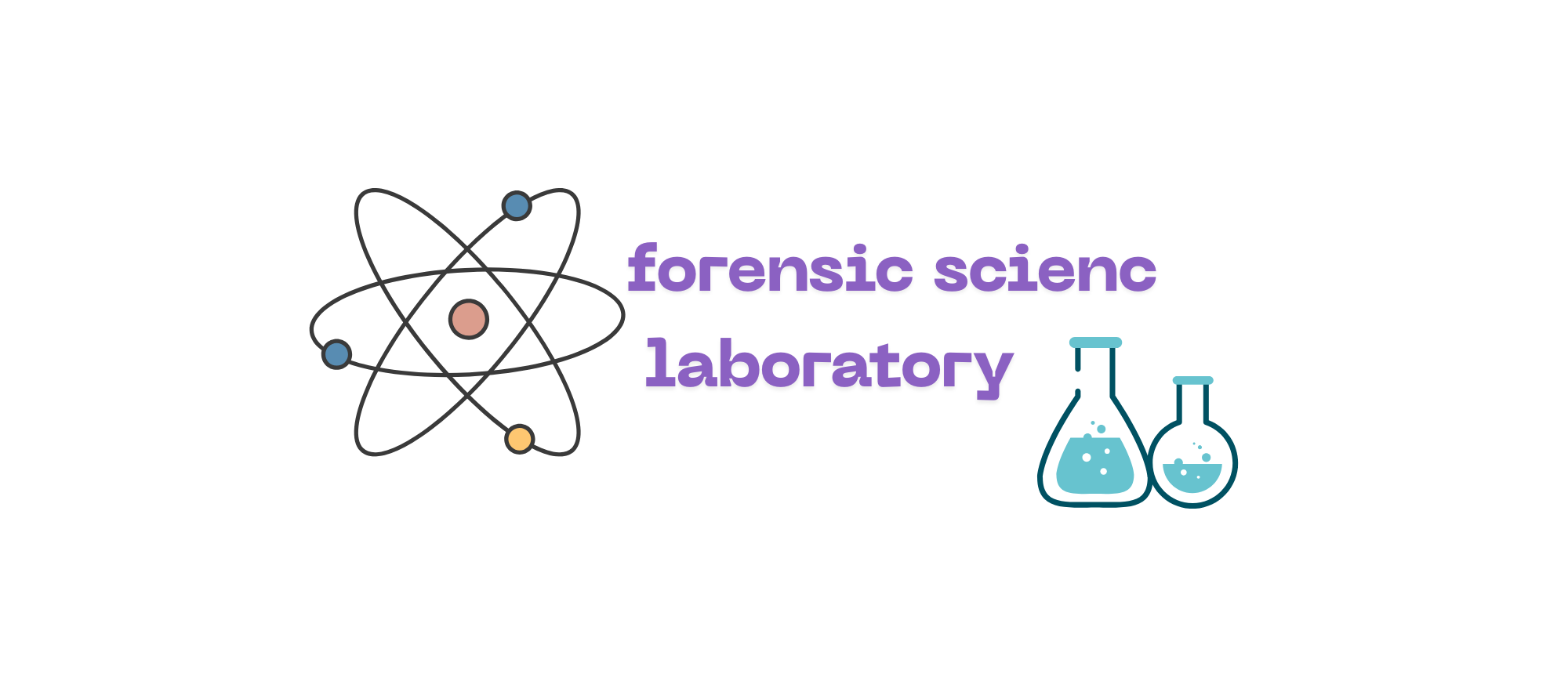Bioterrorism
Definition
Bioterrorism involves the intentional use of biological substances such as infectious microbes or toxic compounds to inflict disease or death on people, animals, or crops. These biological threats may be found in nature or engineered to be more contagious, more deadly, or harder to treat. The goal of such acts is often to spread panic, destabilize societies, damage economies, or further extremist agendas. Because these agents can be difficult to detect and may not produce immediate symptoms, responding to bioterrorism requires strong public health systems and rapid emergency coordination.
Biosecurity
Definition
Biosecurity is the organized application of policies and actions aimed at reducing the risk of exposure to harmful biological materials. These threats arising from natural sources, human error, or deliberate misuse can affect people, animals, crops, and ecosystems. Biosecurity involves monitoring, controlling, and preparing for biological risks to protect health, food systems, the environment, and national stability.
Concepts
Exclusion
Containment
Assessment
Regulation
Surveillance
Response
Training
Collaboration
Resilience
Prevention
Microbial forensics
Definition
Microbial forensics is a specialized scientific field focused on examining biological evidence related to the intentional or accidental release of microorganisms or toxins. Its primary goal is to pinpoint the source of these agents, uncover the circumstances surrounding their dissemination, and provide crucial information for criminal investigations or legal accountability. By integrating techniques from microbiology, genetic analysis, and forensic methodology, this discipline plays a vital role in addressing and resolving biological threat incidents with accuracy and reliability.
Weapon of Mass Destruction (WMD)
A Weapon of Mass Destruction (WMD) encompasses nuclear, chemical, and biological arms designed to inflict extensive casualties and cause severe damage to man-made structures, ecosystems, and resources. These weapons possess the capacity for overwhelming destruction, with nuclear devices notably producing powerful blasts and harmful radiation effects. Beyond their physical impact, the concept of WMD holds significant political weight, symbolizing major threats to international peace and security.
Nuclear Weapons
Definition:
These are weapons that derive their explosive power from nuclear reactions either splitting atoms (fission) or combining them (fusion) to release an enormous amount of destructive energy.
Cause and Effects:
Trigger powerful blasts, intense heat waves, and severe shockwaves.
Release radioactive material into the atmosphere, leading to long-term contamination and health hazards.
Capable of obliterating entire cities and causing lasting environmental devastation.
Examples:
Atomic bombs dropped on Hiroshima and Nagasaki
Hydrogen bombs (thermonuclear weapons)
Chemical Weapons
Definition:
Chemical weapons involve the use of toxic compounds to harm, disable, or kill living organisms by interfering with bodily systems.
Cause and Effects:
Attack the respiratory system, skin, or nervous system depending on the type of agent.It can cause symptoms ranging from choking and burns to paralysis or death, either immediately or over time.
Dangerous to people, animals, and crops, and may contaminate the environment.
Examples:
Nerve agents like sarin and VX
Mustard gas (a blistering agent)
Chlorine gas (a choking agent)
Biological Weapons
Definition:
These weapons use infectious agents—such as viruses, bacteria, or natural toxins—to deliberately spread disease and cause fatalities or panic.
Cause and Effects:
Capable of initiating outbreaks that may spread rapidly among populations.
Effects may take time to appear, complicating diagnosis and containment.
Can cause widespread illness, societal disruption, and mass casualties.
Examples:
Anthrax bacteria
Smallpox virus
Botulinum toxin (a powerful biological poison)
Mass-casualty weapons
Definition
Mass-casualty weapons are weapons capable of causing widespread injuries, illnesses, or deaths in a short time, often overwhelming emergency and medical services. These include chemical, biological, radiological, nuclear, and explosive (CBRNE) weapons. Their use can trigger panic, strain resources, and lead to both immediate and long-term health and environmental consequences.
Types of weapons
- Chemical Weapons
Overview: These use toxic chemicals to injure, incapacitate, or kill humans. Effects can be immediate or delayed, depending on the agent.
Examples: Nerve agents: Sarin, VX Blister agents: Mustard gas
Choking agents: Chlorine, phosgene
Blood agents: Hydrogen cyanide
- Biological Weapons
Overview: These involve the use of living organisms (bacteria, viruses) or toxins to cause disease or death in humans, animals, or crops. They can spread rapidly and are difficult to detect early.
Examples:
Bacteria: Anthrax, plague
Viruses: Smallpox, Ebola
Toxins: Botulinum toxin, ricin
- Radiological Weapons
Overview: These disperse radioactive material to contaminate areas and harm individuals through radiation exposure. Unlike nuclear weapons, they do not involve a nuclear explosion.
Examples:
“Dirty bombs” (Radiological Dispersal Devices – RDDs): Combine explosives with radioactive materials like cesium-137 or cobalt-60.
- Nuclear Weapons
Overview: Extremely destructive weapons that release immense energy from nuclear fission or fusion reactions. Their effects include blast damage, intense heat, and long-term radiation.
Examples:
Atomic bombs: Used in Hiroshima and Nagasaki (1945)
Hydrogen bombs: More powerful thermonuclear weapons
- Explosive Weapons
Overview: These use conventional explosives to cause destruction and casualties through blast pressure, shrapnel, and fire. Often used in terrorist attacks and warfare.
Examples:
Improvised Explosive Devices (IEDs)
Vehicle-borne IEDs (car bombs)
Suicide bomb vests
Military-grade explosives (e.g., TNT, C-4)
Dirty bomb
A dirty bomb, formally known as a radiological dispersal device (RDD), is designed to scatter radioactive substances using traditional explosives such as dynamite. Unlike a nuclear weapon, it doesn’t produce a nuclear detonation but instead spreads radioactive material across the surrounding area through the force of the explosion.
While the initial blast may cause limited physical damage compared to conventional explosives, the release of radioactive particles can lead to widespread contamination of people, infrastructure, and the environment. The primary impact of such a device is not in its immediate lethality but in the fear, disruption, and long-term cleanup it provokes.
Because dirty bombs can be constructed using radioactive sources commonly found in medical, industrial, or scientific settings, they represent a significant risk to public safety and national security.
Impact
- Psychological Consequences
A dirty bomb can induce intense public fear, often far beyond the actual physical threat. Lasting mental health effects, such as trauma and radiation-related anxiety, may persist.
- Health Effects
While the initial explosion may cause physical injuries, the radiation component though usually low-level can lead to long-term health risks, including cancers and other illnesses if exposure is prolonged.
- Environmental Damage
The dispersion of radioactive substances can pollute natural elements like air, water, and land. Decontamination efforts are often slow and may necessitate temporary abandonment of affected zones.
- Economic Consequences
The financial burden includes not only cleanup and medical costs but also loss of business activity. Areas hit by such attacks may suffer from diminished investment, tourism, and commerce.
- Socio-Political Fallout
A poorly managed response can weaken public confidence in authorities and spark public dissent. International tensions may also rise if the source of the radioactive material becomes a point of dispute.
- Disruption of Infrastructure
Critical services—including transportation networks, hospitals, and government facilities—may be forced to close. In some cases, infrastructure could remain offline for extended periods due to contamination.
Question and answers
1. How is bioterrorism defined?
Ans: Bioterrorism refers to the planned use of biological organisms or toxins to spread disease or death among humans, animals, or agriculture.
2. What are the primary objectives behind acts of bioterrorism?
Ans: To create public fear, destabilize nations, disrupt economies, or further ideological or political goals.
3. Why is it challenging to detect bioterrorism early?
Ans: Because many biological agents have delayed symptoms and may be hard to trace initially.
4. What is meant by biosecurity?
Ans: Biosecurity involves strategies and measures designed to prevent the release or misuse of dangerous biological substances.
5. What kinds of risks does biosecurity aim to manage?
Ans: It addresses threats arising from natural outbreaks, accidental exposure, or intentional misuse of biological agents.
6. Can you name three essential principles of biosecurity?
Ans: Preventing entry of harmful agents (exclusion), controlling spread (containment), and ongoing monitoring (surveillance).
7. Why is professional training essential in biosecurity systems?
Ans: It ensures that individuals are well-equipped to detect and respond effectively to biological hazards.
8. What does microbial forensics involve?
Ans: It is the study of biological evidence to trace the source and method of pathogen release in cases of outbreaks or bioterrorism.
9. Why is this field crucial in investigating biological threats?
Ans: It helps authorities determine the origin of the biological material and supports criminal investigations.
10. What disciplines are used in microbial forensic analysis?
Ans: It combines microbiology, DNA sequencing, and forensic investigative techniques.
11. What does the acronym WMD stand for?
Ans: It stands for Weapon of Mass Destruction.
12. Which three categories make up WMDs?
Ans: Nuclear, biological, and chemical weapons.
13. Why are WMDs of major concern globally?
Ans: Because they can cause immense destruction and pose severe risks to international stability.
14. How do nuclear weapons generate energy?
Ans: Through atomic reactions involving either the splitting (fission) or joining (fusion) of atomic nuclei.
15. What are two notable effects of nuclear detonations?
Ans: Massive explosions and harmful radiation that lingers in the environment.
16. Give a historical example of nuclear weapon use.
Ans: The U.S. dropped atomic bombs on Hiroshima and Nagasaki during World War II.
17. What is the purpose of chemical weapons?
Ans: To cause death or injury by using toxic chemicals that disrupt vital bodily functions.
18. Name two commonly known chemical weapon types.
Ans: Blister agents like mustard gas and nerve agents like VX or sarin.
19. What do choking agents like chlorine gas do to the body?
Ans: They irritate and damage the respiratory tract, leading to suffocation in severe cases.
20. What components are used in biological weapons?
Ans: Harmful organisms such as viruses, bacteria, or natural toxins.
21. Why are biological weapons particularly dangerous?
Ans: Because they can spread diseases quickly and remain unnoticed until symptoms arise.
22. Mention two examples of biological warfare agents.
Ans: Anthrax and the smallpox virus.
23. What does the acronym CBRNE include?
Ans: Chemical, Biological, Radiological, Nuclear, and Explosive threats.
24. What qualifies a weapon as a mass-casualty weapon?
Ans: Its ability to cause large-scale injuries or fatalities, overwhelming emergency response systems.
25. Define a dirty bomb.
Ans: It is an explosive device designed to scatter radioactive materials using conventional explosives.
26. How is a dirty bomb distinct from a nuclear bomb?
Ans: It doesn’t initiate a nuclear reaction; it simply spreads radioactive particles using a regular explosion.
27. Where are materials for dirty bombs typically sourced from?
Ans: Common sources include medical, industrial, or scientific radioactive materials.
28. What is the main psychological consequence of a dirty bomb detonation?
Ans: It often creates widespread panic and fear, even when physical harm is limited.
29. What environmental issues can a dirty bomb cause?
Ans: Contamination of air, water, and land, requiring extensive cleanup efforts.
30. What social or political challenges can follow a dirty bomb incident?
Ans: Public distrust in authorities, unrest, and possible international disputes over the material’s source.



